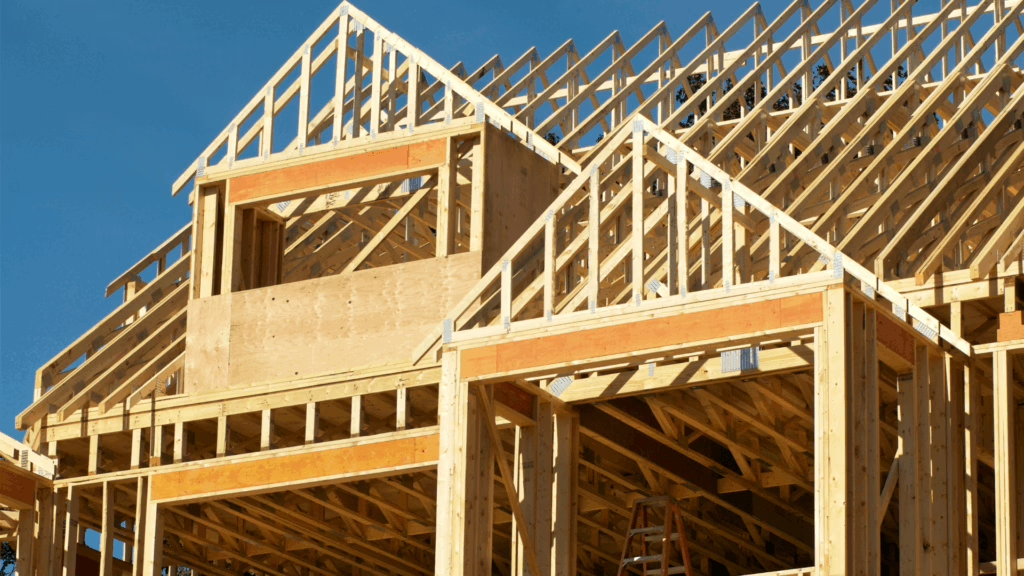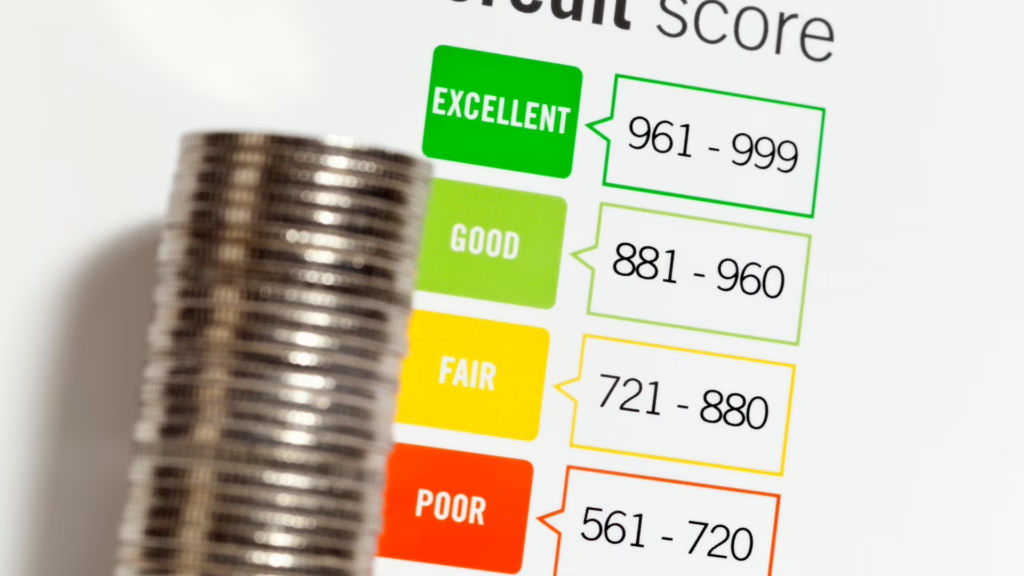In a housing market defined by rising costs and tighter lending standards, many buyers are turning to new construction homes as a fresh start. The clean slate of a brand-new home is appealing due to modern layouts, efficient appliances, and fewer repair surprises. However, financing that newly constructed, never-lived-in home is very different from an existing property purchase. Therefore, knowing and understanding all of your financing options is essential to making the best decision for your new home.
Understanding the Basics of New Construction Financing
 Financing is frequently one most misunderstood factors when dealing with new construction purchases. New builds typically require a more complex arrangement than resale homes. Of course, the complexity of financing depends on the builder, the project timeline, and the needs of the buyer.
Financing is frequently one most misunderstood factors when dealing with new construction purchases. New builds typically require a more complex arrangement than resale homes. Of course, the complexity of financing depends on the builder, the project timeline, and the needs of the buyer.There are generally two types of financing structures for new builds: construction-to-permanent loans and builder-financed purchases. The first involves the buyer securing a construction loan that converts into a traditional mortgage once the home is complete. The second often relies on the builder financing the construction phase, with the buyer closing on a mortgage after the home is finished.
Buyers should be aware that each path carries different risk levels, approval requirements, and time commitments. Choosing the right loan structure requires coordination with your builder, lender, and potentially a real estate attorney to make sure all bases are covered
Construction-to-Permanent Loans Explained

A construction-to-permanent loan is a single-close loan that starts as a construction loan where money is drawn as needed to pay building costs, then converts to a permanent mortgage upon the completion of the home. Buyers close once in this loan arrangement which covers all stages from building to moving in and living in the home. The lender disburses payments in stages (called draws) based on milestones completed. Once the build is finished, the loan automatically converts to a traditional mortgage.
This type of financing offers simplicity and cost savings by eliminating the need for two separate closings. However, buyers typically need to make interest-only payments during the build phase, and the loan often comes with stricter credit and down payment requirements. It’s essential to have a detailed building plan and timeline before applying.
Lenders offering construction-to-permanent loans may also require inspections at each draw phase, which can add delays if construction falls behind schedule. That said, these loans offer peace of mind for buyers wanting to lock in their financing early in the process.
Builder Financing and Preferred Lenders
 Many larger builders have relationships with preferred lenders and offer to finance the construction phase themselves. In these cases, buyers sign a purchase agreement and don’t take on the financial burden of the build. They secure traditional financing closer to the closing date, often with incentives like lower closing costs or interest rate buydowns.
Many larger builders have relationships with preferred lenders and offer to finance the construction phase themselves. In these cases, buyers sign a purchase agreement and don’t take on the financial burden of the build. They secure traditional financing closer to the closing date, often with incentives like lower closing costs or interest rate buydowns.
Builder incentives can be attractive, but they may come with strings attached. Some builders offer closing cost credits only if the buyer uses their preferred lender, who may not offer the best rate or terms. It is critical to compare quotes from outside lenders, even if you’re tempted by the ease of staying in-house.
Buyers should also understand that while the builder carries the financial risk during construction, delays or price escalations may still affect the final purchase. Transparent communication with the sales team and clear contract language can protect your interests.
FHA, VA, and USDA Loans for New Builds

Government-backed loans like FHA, VA, and USDA can be used to finance new construction homes, though the process is more complex than for existing homes. These loans are designed to make homeownership accessible, particularly for first-time buyers, veterans, and rural residents, and they come with favorable terms like lower down payments and more flexible credit requirements.
FHA construction loans typically require a higher level of documentation, including builder credentials, building permits, and a detailed project plan. VA and USDA loans may be more restrictive on eligible builders and locations. Nonetheless, if you qualify, these loans can be a smart way to finance a new home with less upfront cash.
One challenge with government-backed loans is finding lenders experienced in processing them for new construction. Not all banks or credit unions are equipped to handle the added paperwork, so choose your lender carefully and ask upfront about their experience with construction projects.
Custom Builds vs. Tract Homes: Different Financial Paths

Financing a custom home differs dramatically from purchasing a tract home in a planned community. Custom builds often require buyers to purchase land separately, then finance the construction with a stand-alone loan. Tract homes, meanwhile, are typically financed with standard mortgages arranged through the builder’s sales office.
Custom homebuyers have more freedom but also more responsibility—they must coordinate architects, contractors, permits, and inspections. Financing tends to be more fragmented, and budget overruns are common. These buyers may also face stricter lending terms and larger down payments.
Tract homebuyers benefit from the builder’s streamlined process, but the tradeoff is less customization and tighter deadlines. For many, the simplicity of a builder-controlled process is worth the reduced flexibility.
Budgeting for the Hidden Costs

New construction does not always mean move-in ready. Buyers often underestimate the cost of add-ons like landscaping, fencing, window treatments, and even appliances. Some builders offer base pricing that excludes essential upgrades.
Closing costs can also be higher on new construction homes, especially if the builder does not cover them or bundles them into the loan. And property taxes may be reassessed post-construction, leading to an unexpected bump in escrow payments during the first year.
Buyers should set aside a contingency budget, typically 5% to 10% of the home price, for unforeseen costs. A financial cushion ensures peace of mind when surprises inevitably arise.
Locking In Your Rate (or Not)
 Interest rate locks can be tricky when buying new construction. Since the closing date may be months out, buyers face uncertainty about what rates will look like when it’s time to finalize the loan. Some lenders offer extended rate locks for up to 12 months, but these may come with fees or higher starting rates.
Interest rate locks can be tricky when buying new construction. Since the closing date may be months out, buyers face uncertainty about what rates will look like when it’s time to finalize the loan. Some lenders offer extended rate locks for up to 12 months, but these may come with fees or higher starting rates.
Builders sometimes offer buydown programs where they pay part of the interest upfront to give the buyer a lower initial rate. These deals can be appealing in the short term, but may increase costs over the life of the loan.
Staying in close contact with your lender is key. Watch rate trends, ask about float-down options, and know what is required to secure a long-term lock without penalties. A good loan officer will help you time the market with minimal stress.
The Role of the Appraisal in New Construction Loans

Appraisals are a critical piece of the financing puzzle for new construction homes, but they work differently than in resale transactions. Instead of evaluating a completed property, appraisers assess the projected value of the home based on plans, specs, and comparable new builds in the area. This “as-completed” appraisal helps lenders determine the loan-to-value ratio and ultimately how much financing you can secure.
Because the home does not yet exist, appraisals for new builds are more complex. The appraiser must factor in the cost of labor and materials, land value, and market conditions. If the projected value comes in lower than expected, buyers may be required to increase their down payment or renegotiate with the builder.
Some lenders require multiple appraisals, one before construction begins and another upon completion. Delays in construction or design changes can also trigger reappraisals, adding time and cost to the process. It is wise to build some flexibility into your budget and timeline to account for these scenarios.
Ultimately, understanding the appraisal process can help you plan better and avoid surprises. Discuss this with your lender early to ensure your loan structure can accommodate fluctuations in appraised value throughout the build.
Navigating Construction Timelines and Loan Draws
 Financing a new construction home involves more than just securing a loan—it also requires understanding how money flows throughout the build. Lenders do not issue the full loan amount upfront. Instead, they release funds in increments, known as draws, as different phases of construction are completed. This system protects both the lender and the buyer by ensuring funds are tied to verified progress.
Financing a new construction home involves more than just securing a loan—it also requires understanding how money flows throughout the build. Lenders do not issue the full loan amount upfront. Instead, they release funds in increments, known as draws, as different phases of construction are completed. This system protects both the lender and the buyer by ensuring funds are tied to verified progress.
Typically, draw stages include site preparation, foundation, framing, mechanical installation, and final finishing. Each stage must be inspected before the lender releases the next portion of the loan. These inspections can cause delays if the builder is not aligned with the lender’s schedule, so coordination is key.
Buyers should ask for a detailed draw schedule from the lender and confirm that it matches the builder’s construction timeline. It’s also important to track draw disbursements carefully, some lenders require buyer approval before funds are released, giving you a chance to monitor progress and stay in control.
Understanding draw schedules not only keeps your project on track, but it also helps avoid disputes with contractors or lenders. Clear documentation, open communication, and alignment between all parties can make the financing process smoother from the ground up.
How Credit Scores and Debt-to-Income Ratios Affect Approval
 Securing financing for a new construction home means meeting more stringent requirements than for existing homes, particularly when it comes to credit scores and debt-to-income (DTI) ratios. Because construction-to-permanent loans and other new build financing structures carry more risk, lenders look for strong financial profiles.
Securing financing for a new construction home means meeting more stringent requirements than for existing homes, particularly when it comes to credit scores and debt-to-income (DTI) ratios. Because construction-to-permanent loans and other new build financing structures carry more risk, lenders look for strong financial profiles.
Generally, a credit score of 680 or higher is ideal, though some lenders may accept lower scores for government-backed loans. A higher score may qualify you for better terms, including lower interest rates and reduced fees. Keep in mind that credit will likely be reviewed again before final closing, so it’s important to avoid large purchases or new debt during construction.
DTI ratio is equally important. This figure represents the percentage of your monthly gross income that goes toward debt payments. Most lenders prefer a DTI below 43%, though lower ratios improve your chances of approval. If you’re stretching your budget to afford a new build, consider reducing outstanding debts before applying.
Getting pre-approved before you begin the building process can give you a clearer picture of your budget and prevent surprises. Work with a lender who understands new construction and can guide you through the unique financial considerations that come with building from scratch.
TL;DR – Key Takeaways
-
- New construction financing differs from resale homes and may involve multiple loan phases
-
- Construction-to-permanent loans cover both the build and mortgage with a single closing
-
- Builders often offer incentives to use preferred lenders, but shop around
-
- FHA, VA, and USDA loans are available but require more documentation
-
- Custom homes demand more effort and funding than tract homes
-
- Budget for hidden costs like landscaping, upgrades, and taxes
-
- Locking your mortgage rate early can save money but comes with risks
-
- Understand appraisal timelines and lender draw schedules
-
- Strong credit and low DTI are crucial for loan approval
Sources
U.S. Department of Housing and Urban Development (HUD)
National Association of Home Builders (NAHB)
Federal Housing Administration (FHA)
Veterans Affairs (VA) loan handbook
USDA Rural Development loan program
Interviews with licensed mortgage brokers and real estate attorneys
Freddie Mac and Fannie Mae lending bulletins
